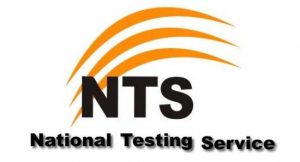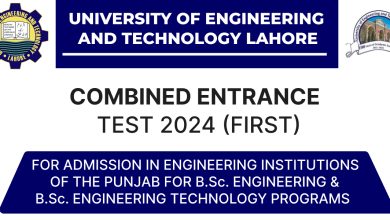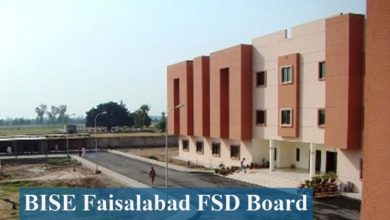Graduate Assessment test subject is being formulated for the candidates who are willing to apply for the PHD programs. This is high education evaluation test based on personal thinking and mind frame of the individual. Each Student when has done his/ her post graduate degree of 16 years of education and want to continue to PhD program must appear in this test and if and only they pass this test they attach its result card with admission form and then their merit is prepared according to a formula. Moreover this test is also valid for next two years like other NTS test while student who think that the obtaining marks are not good enough to take admission can re-attempt this test before two year any time to improve their marks. Above all it is also intimated that in case any student does fail in this test are rejected to proceeded with admission procedures. So here on this page we have just prepared for providing you the best guidance about GAT subjects test paper pattern, keep on reading….
GAT Subjects Test Paper Pattern

GAT Subject Test Courses
- Agriculture Sciences
- Architectural Engineering
- Civil Engineering
- Economics
- Education
- Electrical Engineering
- Electronics
- Environmental Sciences / Engineering
- Geography
- History
- Islamic Studies
- Telecom Engineering
- Urdu
These are the subjects and further more information about each GAT Subjects Test Paper Pattern are as follow.
GAT Subjects
| |
| Sr. | Core Areas of Agriculture Sciences | Percentage
(100% of 70%) |
| 1. | Agronomy and Crop Physiology | 10% |
| 2. | Crop Protection | 10% |
| 3. | Agriculture Engineering | 10% |
| 4. | Plant Breeding and Genetics | 10% |
| 5. | Horticulture and Forestry | 10% |
| 6. | Soil Science | 10% |
| 7. | Biotechnology | 10% |
| 8. | Agriculture Extension | 10% |
| 9. | Agriculture Economics | 10% |
| 10. | Rural Sociology and Development | 10% |
| Total: | 100% |
| |
| Architectural Engineering |
| Sr. | Core Areas of Architectural Engineering | Percentage |
| 1. | Basic Design – I | – |
| 2. | Visual Communication – I | – |
| 3. | Business Communication | – |
| 4. | History of Architecture – I | – |
| 5. | Islamic and Pakistan Studies – I | – |
| 6. | Basic Design – II | – |
| 7. | Visual Communication – II | – |
| 8. | Computer Application in Architecture – I | – |
| 9. | Islamic and Pakistan Studies – II | – |
| 10. | Materials and Construction – I | – |
| 11. | Architectural Design – I | – |
| 12. | Computer Application in Architectural – II | – |
| 13. | Materials and Construction – II | – |
| 14. | Visual Communication – III | – |
| 15. | History of Architecture – II | – |
| 16. | Architectural Design – II | – |
| 17. | Visual Communication – IV | – |
| 18. | Materials and Construction – III | – |
| 19. | Structure for Architects – I | – |
| 20. | Computer Application in Architecture – III | – |
| 21. | Surveying and Leveling | – |
| 22. | Architectural Design – III | – |
| 23. | Materials and Construction – IV | – |
| 24. | Structure for Architects – II | – |
| 25. | Services and Engineering Systems – I | – |
| 26. | History of Architecture – III | – |
| 27. | Architectural Design – IV | – |
| 28. | Materials and Construction – V | – |
| 29. | Structure for Architects – III | – |
| 30. | Services and Engineering Systems – II | – |
| 31. | Climatology and Thermal Comfort | – |
| 32. | Architectural Design – V | – |
| 33. | Urban Design | – |
| 34. | Theory of Architecture – I | – |
| 35. | Conservation and Adaptive Re-use | – |
| 36. | Project Management | – |
| 37. | Architectural Design – VI | – |
| 38. | Interior Design | – |
| 39. | Landscape Design | – |
| 40. | Theory of Architecture – II | – |
| 41. | Research Methodology | – |
| Total: | – |
| |
| Civil Engineering |
| Sr. | Core Areas of Civil Engineering | Percentage |
| 1. | Engineering Drawing | 8 % |
| 2. | Engineering Mechanics | 4 % |
| 3. | Engineering Surveying | 8 % |
| 4. | Engineering Material | 4 % |
| 5. | Fluid Mechanics | 8 % |
| 6. | Mechanics of Solids | 6 % |
| 7. | Mechanics Geology | 4 % |
| 8. | Structural Analysis | 8 % |
| 9. | Transportation Engineering | 8 % |
| 10. | Engineering Construction | 5 % |
| 11. | Reinforced Concrete Design | 6 % |
| 12. | Soil Mechanics | 3 % |
| 13. | Environmental Engineering | 3 % |
| 14. | Civil Work Quantity and Cost Estimations | 6 % |
| 15. | Architectureand Town Planning | 6 % |
| 16. | Steel Structure | 3 % |
| 17. | Structural Designand Drawing | 3 % |
| 18. | Construction Planning and Management | 4 % |
| 19. | Irrigation and Water Resources Engineering | 3 % |
| Total: | 100 % |
| |
| Economics |
| Sr. | Core Areas of Economics | Percentage |
| 1. | Microeconomics | 10 % |
| 2. | Macro Economics | 10 % |
| 3. | Quantitative Economics | 10 % |
| 4. | International Trade Theory and Finance | 10 % |
| 5. | Econometrics: Theory and Applications | 10 % |
| 6. | Development Economics: Theory and Policy | 10 % |
| 7. | Monetary Theory and Policy | 5 % |
| 8. | Public Finance | 5 % |
| 9. | Major Issues in Pakistan Economy | 5 % |
| 10. | Islamic Economics | 5 % |
| 11. | Managerial Economics | 5 % |
| 12. | Agricultural Economics | 5 % |
| 13. | Human Resource Development and Management | 5 % |
| 14. | Research Methodology | 5 % |
| Total: | 100 % |
| |
| Education |
| Sr. | Core Areas of Education | Percentage |
| 1. | Perspective of Education | 25 % |
| 2. | Educational Psychology | 15 % |
| 3. | Curriculum Development | 10 % |
| 4. | Educational Measurement , Testing and Evolution | 15 % |
| 5. | Educational Research | 10 % |
| 6. | Educational Planning, Measurement / Educational Administration | 10 % |
| 7. | Pedagogy and Teaching Technology | 10 % |
| 8. | Educational Technology | 5 % |
| Total: | 100 % |
| |
| Electrical Engineering |
| Sr. | Core Areas of Electrical Engineering | Percentage |
| 1. | Basic Electric Engineering | 12 % |
| 2. | Communication Systems | 8 % |
| 3. | Control Systems | 8 % |
| 4. | Digital Signal Processing | 5 % |
| 5. | Electrical Machines | 8 % |
| 6. | Electromagnetic Field Theory | 8 % |
| 7. | Electronic Devices and Circuits | 8 % |
| 8. | Instrumentation and Measurement | 5 % |
| 9. | Integrated Circuits | 5 % |
| 10. | Principle of Computing | 8 % |
| 11. | Digital Logic Design | 8 % |
| 12. | Microprocessor Based System | 4 % |
| 13. | Power Electronics | 5 % |
| 14. | Power Systems | 8 % |
| Total: | 100 % |
| |
| Electronics |
| Sr. | Core Areas of Electronics | Percentage |
| 1. | Basic Electrical Engineering | 10 % |
| 2. | Electronic Circuits and Devices | 10 % |
| 3. | Programming Techniques | 3 % |
| 4. | Digital Logic Design | 6 % |
| 5. | Integrated Circuits | 5 % |
| 6. | Electromagnetic Fields Theory and Radiating System | 5 % |
| 7. | Electrical Measurements and Instrumentation | 5 % |
| 8. | Linear Control Systems | 5 % |
| 9. | Data Communication and Computer Networks | 5 % |
| 10. | Signals and Systems | 5 % |
| 11. | Digital Signal Processing | 5 % |
| 12. | Optoelectronics | 3 % |
| 13. | Power Electronics | 4 % |
| 14. | VLSI Design | 5 % |
| 15. | Microprocessor Systems and Interfacing | 6 % |
| 16. | Automation and Robotics | 5 % |
| 17. | Communication Systems | 8 % |
| 18. | Digital System Design | 5 % |
| Total: | 100 % |
| |
| Environmental Sciences / Engineering |
| Sr. | Core Areas of Environmental Sciences / Engineering | Percentage |
| 1. | Ecology | 10 % |
| 2. | Air, Climate pollution | 6 % |
| 3. | Water resources, pollution | 5 % |
| 4. | Environmental Geology and Earth resources | 7 % |
| 5. | Environmental Conservation (forests, grasslands) | 10 % |
| 6. | Sustainability & Human Development | 5 % |
| 7. | Environmental Science and Policy, laws and planning | 7 % |
| 8. | Solid waste and hazardous material | 5 % |
| 9. | Biodiversity | 6 % |
| 10. | Human population | 3 % |
| 11. | Radiation | 4 % |
| 12. | Agricultural pollution | 5 % |
| 13. | Pesticides | 5 % |
| 14. | Energy | 4 % |
| 15. | Preserving nature | 5 % |
| 16. | Treatment of Wastes | 5 % |
| 17. | Affects of pollutants on vegetation and humans | 8 % |
| Total: | 100 % |
| |
| Geography |
| Sr. | Core Areas of Geography | Percentage |
| 1. | Physical Geography | 35 % |
| A. | Geomorphology
| 7 % |
| B. | Oceanography
| 7 % |
| C. | Climatologyand Meteorology
| 7 % |
| D. | Bio-Geography (Plantand Zoo Geography)
| 7 % |
| E. | Hydro and Soil Geography
| 7 % |
| 2. | Human Geography | 35 % |
| A. | Economic Geography
| 35 % |
| B. | Regional Geography of the World
| 5.83 % |
| C. | Settlement Geography (Rural and Urban)
| 5.83 % |
| D. | Social and Cultural Geography
| 5.83 % |
| E. | Population Geography
| 5.83 % |
| F. | Environmental Geography (including Natural Hazards and Disaster Mitigation)
| 5.83 % |
| 3. | Practical Geography | 30 % |
| A. | Mapping and Map Projection
| 6 % |
| B. | Cartography
| 6 % |
| C. | Surveying and Global Position System (GPS)
| 6 % |
| D. | Remote Sensingand Air Photo Interpretation
| 6 % |
| E. | Geographic Information System (GIS)
| 6 % |
| F. | Quantitativeand Statistical Geography
| 6 % |
| Total: | 100 % |
| |
| History |
| Sr. | Core Areas of History | Percentage |
| 1. | Early History of Islam | – |
| 2. | Research Methodology | – |
| 3. | State and Society in Muslim India 1206 – 1707 | – |
| 4. | Muslim Struggle for Independence 1858– 1930 | – |
| 5. | Government and Politics in Pakistan 1947 – 2000 | – |
| 6. | Modern Europe (1789– 1945) | – |
| 7. | Muslim Struggle for Independence 1930 – 1947 | – |
| 8. | Foreign Policy of Pakistan 1947 – 1997 | – |
| 9. | Philosophy of History | – |
| 10. | International Relations and Organizations | – |
| 11. | Ancient India | – |
| 12. | Contemporary Middle East | – |
| 13. | Early Modern Europe (1453 – 1789) | – |
| 14. | History of England (1688 – 1919) | – |
| 15. | United States after Second World War | – |
| 16. | Human Rights in Pakistan | – |
| 17. | Women Empowerment in Pakistan | – |
| 18. | Local Self-Government in Pakistan | – |
| 19. | Role of Military in Pakistan | – |
| 20. | Pakistan’s Economy – An Historical Survey (1947 – to date) | – |
| 21. | Pakistani Languages and Literature | – |
| 22. | Muslim Rule in India (712 – 1526) | – |
| 23. | Pakistani Society and Culture | – |
| 24. | Muslim Civilization and Culture | – |
| 25. | Muslim Political Thought and Institutions | – |
| 26. | Muslim Contribution to Arts, Science and Architecture | – |
| 27. | History of Revivalist Movements in Islam | – |
| 28. | Modern Muslim World: Challenges of the New Millennium | – |
| 29. | The Great Mughals (1926 – 1707) | – |
| 30. | Later Mughals & British India (1707– 1857) | – |
| 31. | The Punjab in Modern Times | – |
| 32. | Umayyads and Abbasides | – |
| 33. | Muslim Rule in Spain | – |
| 34. | The Ottoman Empire | – |
| 35. | Central Asia | – |
| Total: | – |
| |
| Islamic Studies |
| Sr. | Core Areas of Islamic Studies | Percentage |
| 1. | Quran | 12 % |
| 2. | Hadith | 12 % |
| 3. | Fiqh | 12 % |
| 4. | Comparative Study of Religions | 12 % |
| 5. | Islamic History | 10 % |
| 6. | Islamic Economics | 5 % |
| 7. | Islam and Science | 6 % |
| 8. | Islam and Modern Political Thoughts | 4 % |
| 9. | Islam and Modern Social Thoughts | 4 % |
| 10. | Research Methodology | 4 % |
| 11. | Quantitative General | 4 % |
| 12. | English | 15 % |
| Total: | 100 % |
| |
| Telecom Engineering |
| Sr. | Core Areas of Telecom Engineering | Percentage |
| 1. | Basic Electrical Engineering | 12 % |
| 2. | Analog Communication Systems | 8 % |
| 3. | Control Systems | 8 % |
| 4. | Digital Signal Processing | 5 % |
| 5. | Electrical Machines | 8 % |
| 6. | Electromagnetic Field Theory | 8 % |
| 7. | Electronic Devices and Circuits | 8 % |
| 8. | Digital Communication System | 5 % |
| 9. | Data Communication and Computer Networks | 5 % |
| 10. | Microwave Engineering | 8 % |
| 11. | Digital Logic Design | 8 % |
| 12. | Microprocessor Based System | 4 % |
| 13. | Telecommunication System Engineering | 5 % |
| 14. | Antenna and Radio-Wave Propagation | 8 % |
| Total: | 100 % |
| |
| Urdu |
| Sr. | Core Areas of Urdu | Percentage |
| 1. | Principles of Literary Research | 12 % |
| 2. | Criticism | 10 % |
| 3. | Historical Linguistics | 10 % |
| 4. | New literary and Critical Trends | 10 % |
| 5. | IIm-e-Badee-o-Bayan and Prosody | 8 % |
| 6. | History Poetry and Prose in Urdu | 15 % |
| 7. | Classical Poetry | 12 % |
| 8. | Modern poetry | 8 % |
| 9. | Special Study of Mir, Ghalib and Iqbal | 15 % |
| Total: | 100 % |
| |
GAT Paper Pattern:
The paper pattern of the GAT subject is that it is based on the Multiple Choice Questions. There are a total of 100 MCQ’s in the paper and the time which is being allocated to the candidates is of 120 minutes that is 2 hours.
The content of the test is being based on two factors. The one is the general section which comprises of the 30% of the total exam and the remaining 70% is constituted by the Subject section of the paper. The area of General section which is about 30% of the total paper is being further divided in to English (Verbal) and Analytical Reasoning both carrying the weightage of 15% each.
Test Format of GAT Subject:
- Total Questions (MCQs) = 100
- Total Test Time = 120 Minutes (2 Hours)
- Test Type: Paper Based
Test Contents:
- General Section = 30% of the Total Test
- Subject Section = 70% of the Total Test
Areas of General Section:
- English (Verbal) = 15%
- Analytical Reasoning = 15%









Thank you for the detailed information. I would like to see a paper sample for the architecture exam, if possible. Many thanks
I want to 5years mcq question in agriculture exam.